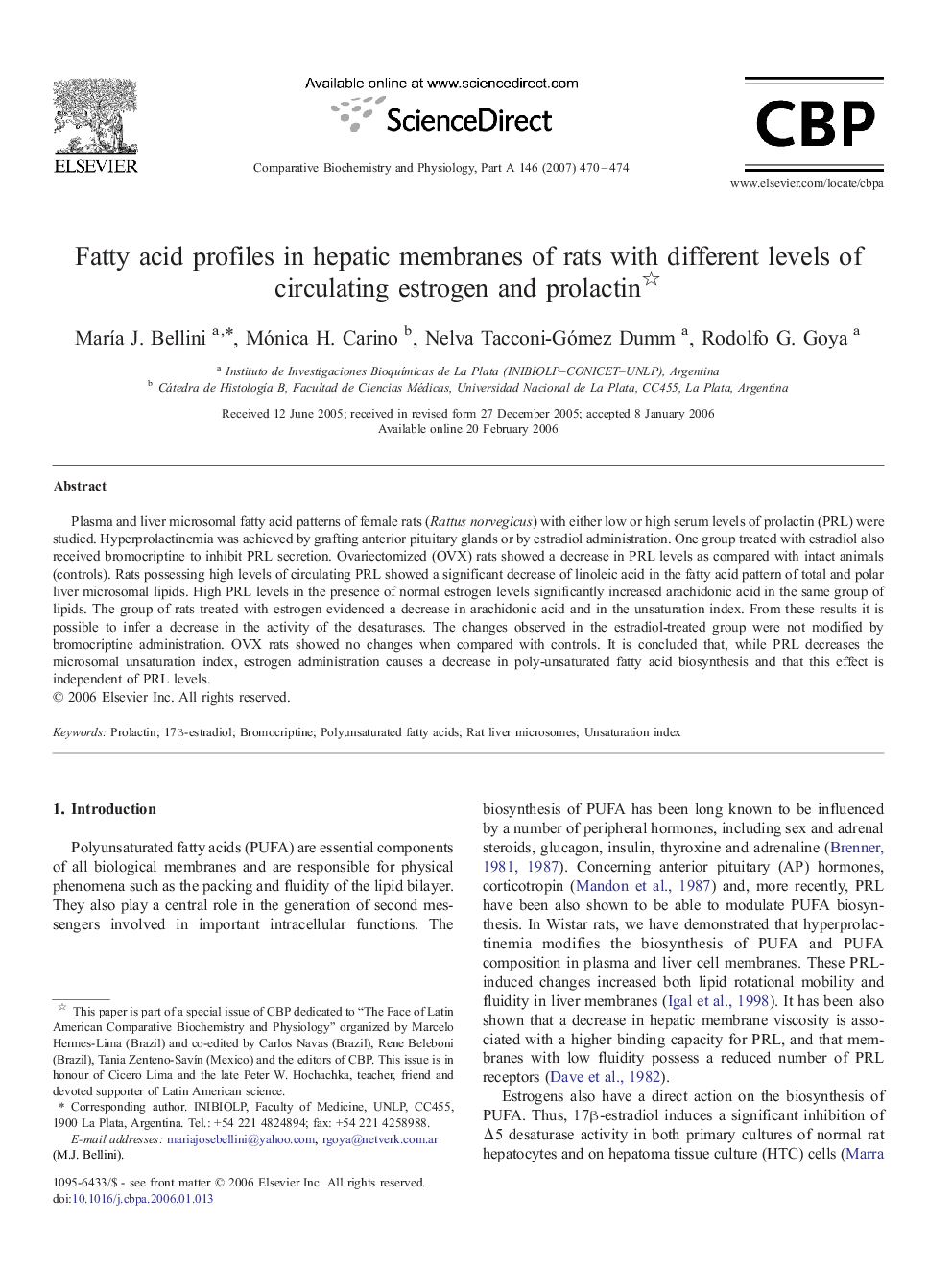| Article ID | Journal | Published Year | Pages | File Type |
|---|---|---|---|---|
| 1974866 | Comparative Biochemistry and Physiology Part A: Molecular & Integrative Physiology | 2007 | 5 Pages |
Abstract
Plasma and liver microsomal fatty acid patterns of female rats (Rattus norvegicus) with either low or high serum levels of prolactin (PRL) were studied. Hyperprolactinemia was achieved by grafting anterior pituitary glands or by estradiol administration. One group treated with estradiol also received bromocriptine to inhibit PRL secretion. Ovariectomized (OVX) rats showed a decrease in PRL levels as compared with intact animals (controls). Rats possessing high levels of circulating PRL showed a significant decrease of linoleic acid in the fatty acid pattern of total and polar liver microsomal lipids. High PRL levels in the presence of normal estrogen levels significantly increased arachidonic acid in the same group of lipids. The group of rats treated with estrogen evidenced a decrease in arachidonic acid and in the unsaturation index. From these results it is possible to infer a decrease in the activity of the desaturases. The changes observed in the estradiol-treated group were not modified by bromocriptine administration. OVX rats showed no changes when compared with controls. It is concluded that, while PRL decreases the microsomal unsaturation index, estrogen administration causes a decrease in poly-unsaturated fatty acid biosynthesis and that this effect is independent of PRL levels.
Keywords
Related Topics
Life Sciences
Biochemistry, Genetics and Molecular Biology
Biochemistry
Authors
MarÃa J. Bellini, Mónica H. Carino, Nelva Tacconi-Gómez Dumm, Rodolfo G. Goya,
